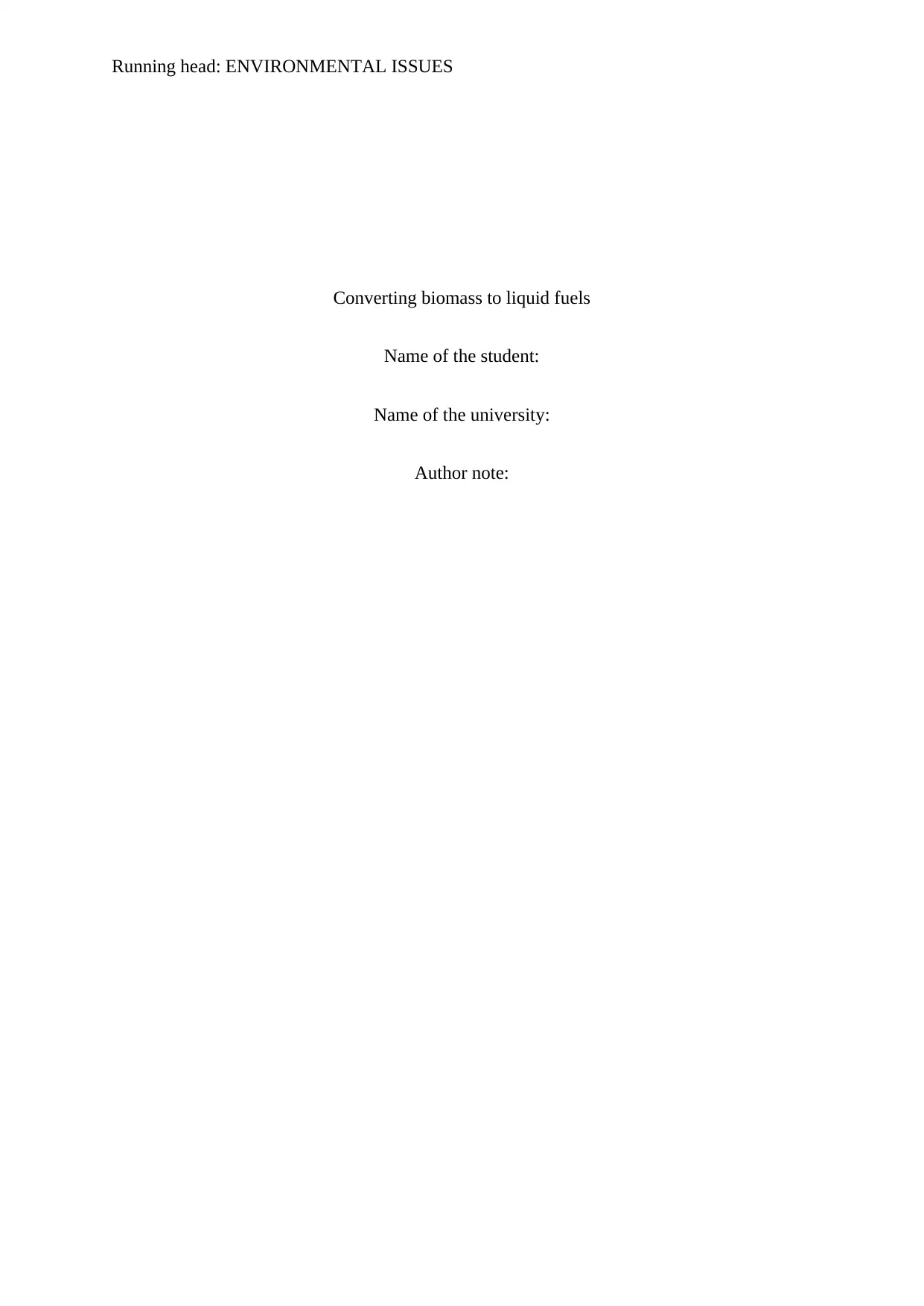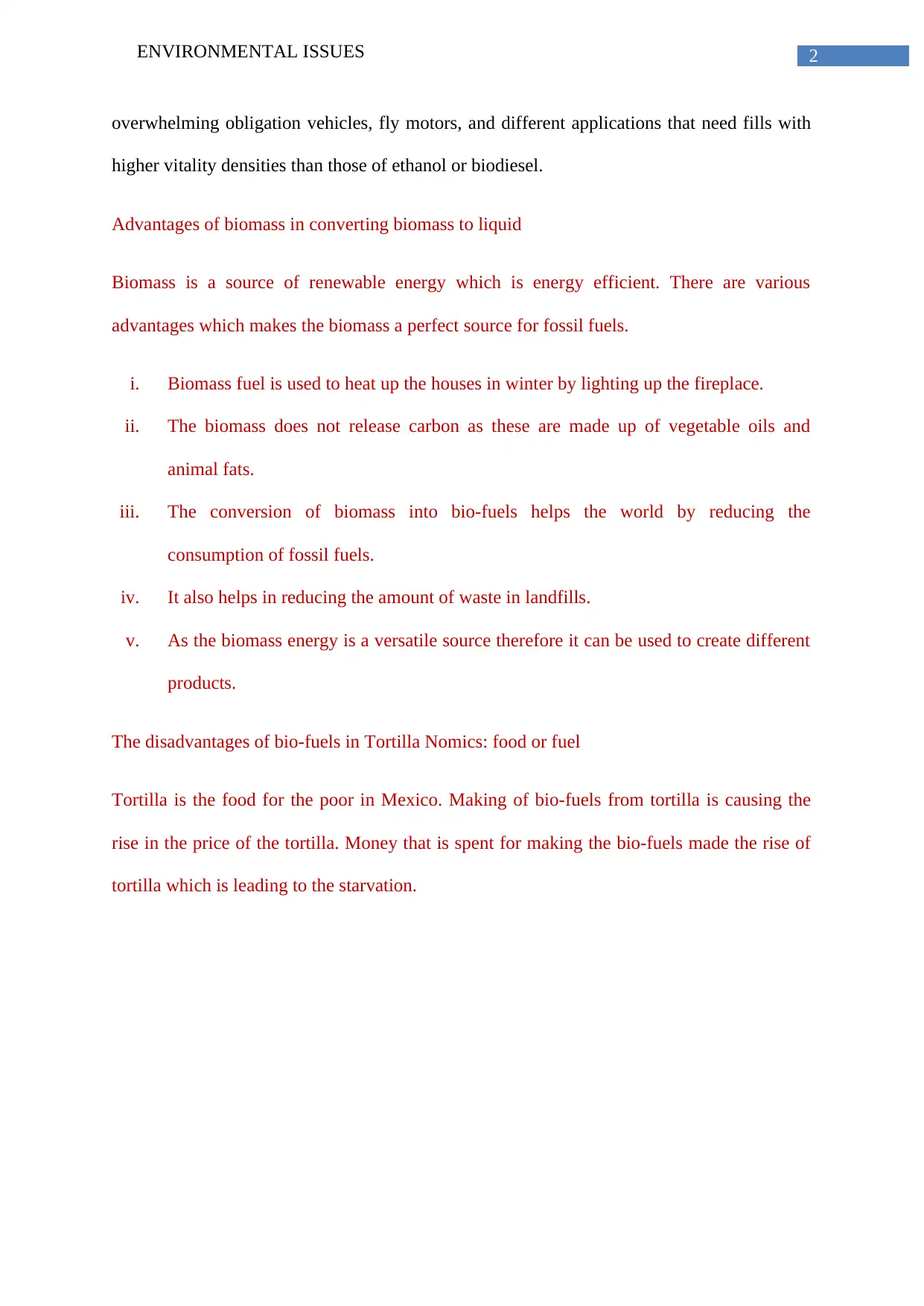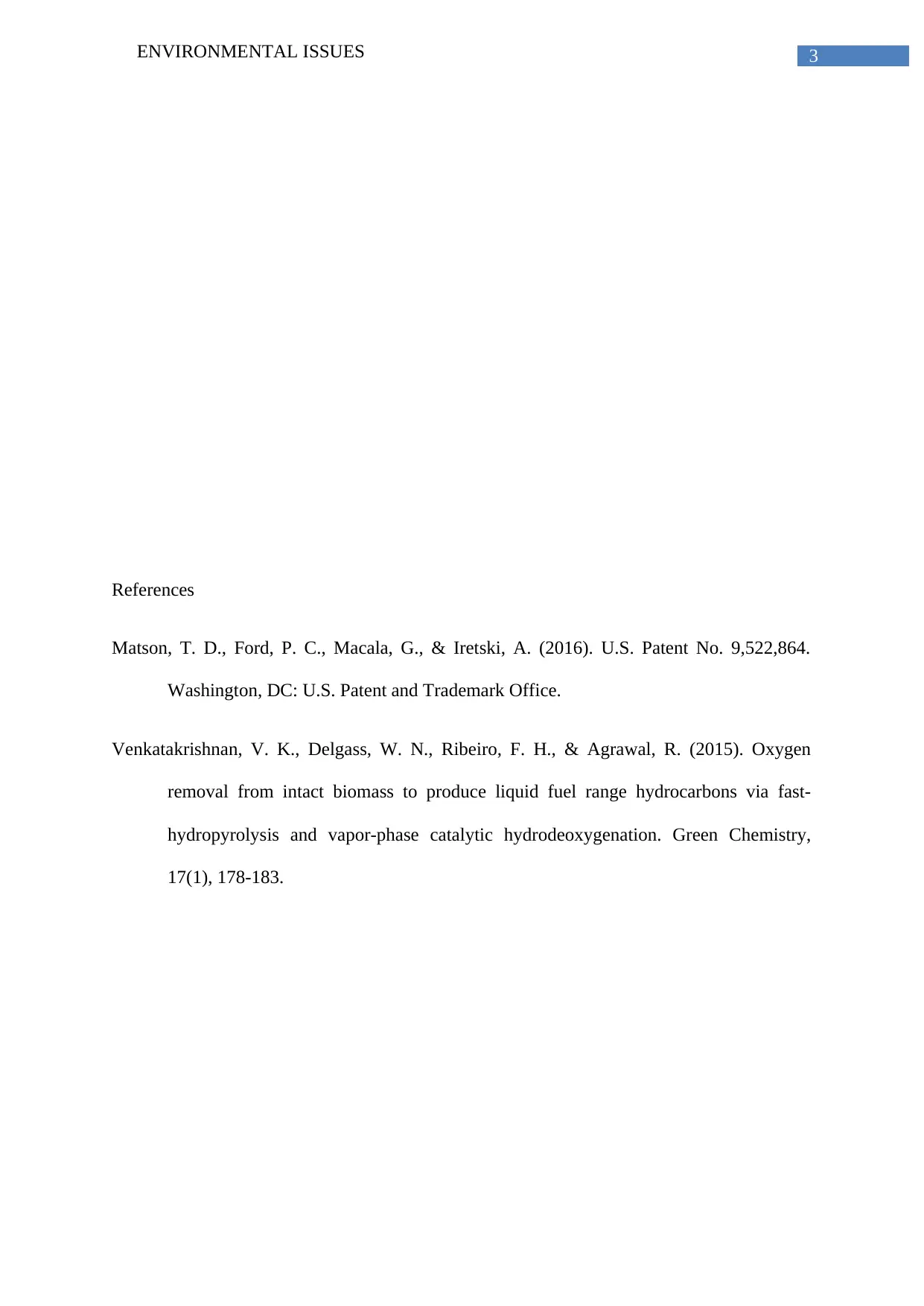Biomass to Liquid Fuels: Conversion Processes and Impacts
VerifiedAdded on 2020/05/11
|4
|608
|87
Report
AI Summary
The report delves into the conversion of biomass to liquid fuels such as ethanol and biodiesel. It explores various processes including pyrolysis and genetic modification to enhance lipid content for biodiesel production. The thermochemical process, like pyrolysis, breaks down biomass without air, resulting in an oil-like substance that can be refined into biofuels. This conversion is advantageous due to its renewable nature and efficiency, aiding in reducing fossil fuel consumption and waste management. However, it also highlights economic impacts such as increased tortilla prices when using food crops like tortillas for biofuel production, posing challenges for food security.
1 out of 4





![[object Object]](/_next/static/media/star-bottom.7253800d.svg)